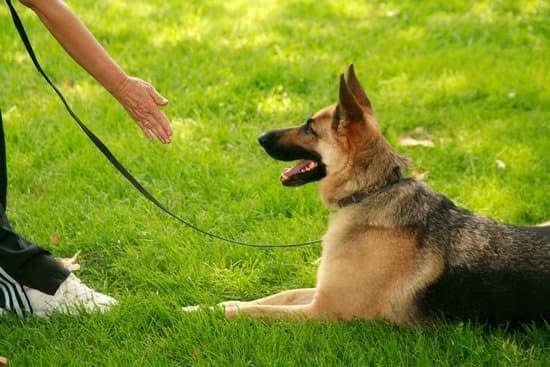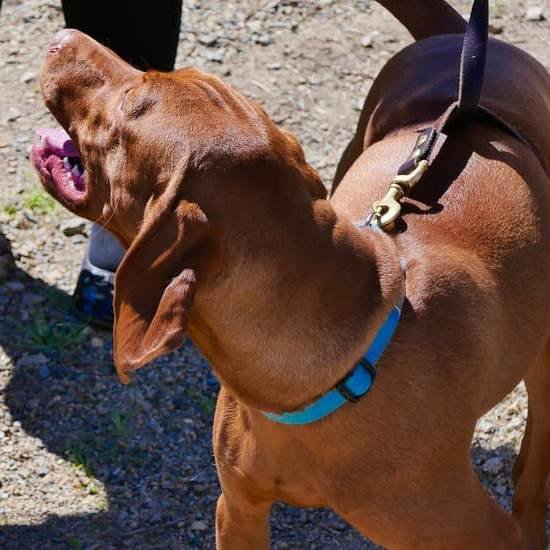Introduction
Training your dog to bark is a valuable and worthwhile investment in both your pet’s safety and in creating better boundaries between you. It allows you to teach boundaries by instructing your pup when it’s okay to bark and when it isn’t, helping the dog understand that barking is only used in certain situations. This can be beneficial when it comes time for the dog to go places such as the vet, groomer, or daycare. Furthermore, training your dog to bark can be useful when welcoming guests over or alerting you of someone entering the house unannounced. It also provides a sense of comfort and contentment for both parties as it allows for a more meaningful relationship between pet and owner by understanding each other’s needs better. Last but not least, teaching your pup good barking habits can help ward off any bad behavior such as unnecessary barking or aggression from the dog. All these benefits make teaching your dog how to properly bark an incredibly valuable lesson!
Start Early
The most suitable age to start training a dog to bark ranges from 8 to 12 weeks old. At this stage, puppies are beginning to develop their own personality, and they can be taught basic commands and behaviors. However, it is crucial to remember that puppies process learning differently than adult dogs and require extra patience when teaching new behaviors. Additionally, it is important for owners to set clear expectations for their pets and provide consistent guidance in order for their pet’s training process to be successful.
Use Positive Reinforcement
Positive reinforcement is a key technique for training your dog to bark. This process involves rewarding desired behaviors with something your dog finds rewarding, such as yummy treats, special toys, or verbal praise. Such reinforcement should be given consistently and on time so that your pup can associate the behavior with a positive outcome every time. It is important to remember that different types of reinforcement achieve different things. For example, food rewards are a great way to get your pup to focus and stay motivated during training. On the other hand, verbal praise and petting causes an increase in oxytocin in the brain that make your pup feel happy and secure which can help create long-term good habits. Additionally, providing small toys as a reward helps to keep your pup engaged with you throughout the whole training experience by creating excitement for each session. Understanding how these various types of reinforcement work will help you get the results you are looking for when teaching your canine friend how to bark!
Teach the Command Word
Training your dog to bark is an important part of overall good behavior. The first step in teaching your dog to bark is to teach them the command word. This can be done through positive reinforcement such as giving treats when they execute the command correctly. Additionally, you can demonstrate examples of how they should bark by barking yourself and reinforcing their barks with treats or praise. Once they understand and recognize the command, you can move on to other steps in the training process.
To further reinforce their understanding, use a clicker or whistle to signal that they have done something correct after giving the command. Give ample opportunity for practice and exercise patience throughout the process so that your pet remains focused on learning this new skill. As your dog gains confidence in barking on command, start increasing distances from which it needs to respond and reduce distractions when practicing. Additionally, try introducing different environments so that your pet learns how to react and bark in any situation. Finally, offer regular rewards for executing commands correctly so that you build their confidence even more and encourage them to keep up with proper behavior from here on out.
Practice, Practice, Practice
1. Start small: Begin by rewarding your dog for barking at the sound of their name, or when given a command such as ‘speak’. Work up to other noises they are likely to respond to with a bark.
2. Use positive reinforcement: Each time your dog barks correctly, reward them with treats, praise, or a toy.
3. Keep training sessions short and repeat often: It’s important to keep your dog engaged and retains its interest in learning; therefore perform several short practice sessions throughout the day. Make sure enough time has passed between practice so that your pup does not become bored or frustrated with repeating commands.
4. Stick to one method of vocal encouragement only: Whether you use verbal commands or clapping your hands in order to get your dog barking, ensure that you always use the same method each time you want your dog to bark and avoid using multiple methods of encouragement (e.g., speaking and clapping) as this can confuse your pup.
5 Vary the environment/locations: Training outside may encourage different responses than indoor training and provide new opportunities for teaching how to bark properly. Try teaching in unfamiliar areas such as parks, yards, playgrounds, beaches etc.; as these environments might present exciting distractions such as other animals/people which may help trigger a proper barking response from your pet!
Rethinking the Purpose Behind the Bark
Dogs bark for a variety of reasons, so training your dog to bark may require addressing the different purposes behind their barking. They might be expressing excitement, boredom, fear, or alerting you to potential danger.
If your dog barks out of excitement: Provide mental stimulation and physical exercise to keep them busy and curbed stress levels, then train them in commands to do after they bark. This could include teaching them to sit, lay down or stay when they bark as a form of self-control.
If your dog barks out of boredom: Increase the level of engagement with your pet by providing a variety of interactive toys and activities that provide puzzle stimulation. After they have mentally exhausted themselves through playtime, train them with commands such as sit, lay down or stay when they start to bark.
If your dog barks out of fear: Assess their environment or situation and attempt to remove any potential threats that could cause fear if possible. If not possible give them confidence building exercises through counter conditioning methods such as reward-based training like clicker training.
If your dog is barking as an alert: Teach them how to remain quiet after barking by teaching them a command such as “speak” followed by “quiet”. Reward positive behavior with praise or treats and help build trust between you and your pet through positive reinforcement techniques.
When Its Time to Update the Training
As your dog progresses through their training journey, the consistency of their barking should become more precise and reliable. If a bark is needed, they should bark in an appropriate manner such as a deep bark or a loud bark. For example, if you’re going on a walk and it’s time for them to alert you of any strangers or strange objects, the bark should be loud enough to cause attention without being overly aggressive. Additionally, depending on the context of the bark, the intonation of the bark could vary slightly. For example, if its bedtime, you can train your dog to give off spaced out soft yaps or gentle woofs instead of a loud and vigorous one.
When your dog begins to understand various contexts for barking (e.g., strangers vs squirrels), consider testing out more complicated scenarios such as stranger intrusion training where they should make an extra effort to alert you when they sense potential danger such as unfamiliar people approaching your property or home.
Relieving the Stress of Barking
When training your pup to bark, it’s important to understand why they bark and the underlying feelings associated with it. Barking is a sign of stress or anxiety in dogs and can be caused by a wide variety of issues, including loneliness, boredom, fear, or territoriality. If you want your dog to stop barking, you may need to identify these sources of stress and anxiety in order to create a solution that works for them.
One way to reduce stress related barking is to provide more mental and physical stimulation for your pup during their day. Providing them with enough exercise each day helps reduce some stress and can help decrease excessive barking behavior. Enrichment activities such as food puzzles, hide-and-seek games and even interactive toys can also help keep your pup better occupied throughout the day which can help alleviate some barking behavior.
If your dog is barking due to fear and anxiety while out on walks or in unfamiliar environments, enrolling in a obedience class can be helpful. A professional trainer will be able to assist you on how best to train your pup that these situations are not as scary as they seem. They’ll learn proper walking etiquette as well as commands like sit and stay so that you can take control when needed. Depending on the level of comfort for both you and your dog, positive reinforcement methods such as treats can also be used during these situations which will give them something positive (and yummy!) to associate the situation instead of feeling anxious or stressed from it.
In addition to providing additional physical activity for your pet, desensitization therapy may also help if there is an underlying fear causing the barking. Over time being exposed to things like strange noises or people gradually at low levels allows them the ability understand that these situations isn’t necessarily something bad or threatening and reduces the tendency to respond with loud barks when they encounter these triggers in their environment again.
Conclusion
Training a dog to bark can be an effective way of communicating and bonding with your pet. The key benefits of training a dog to bark are numerous: increased safety (as barking can alert you to intruders), improved behavior (as barking can reduce problem behaviors like chewing), better communication (which will enable you to set boundaries and reinforce desired behaviors), and increased satisfaction from your bond with the dog. To get started, use positive reinforcement techniques such as rewards, treats, verbal praise and physical affection when the dog barks on command. Additionally, start in low distraction environments at a distance from any triggers, gradually adding distractions or triggers closer as the training progresses. With consistency and patience on your part, your furry friend will begin communicating through barking when asked – allowing both of you to enjoy its many benefits.

Welcome to the blog! I am a professional dog trainer and have been working with dogs for many years. In this blog, I will be discussing various topics related to dog training, including tips, tricks, and advice. I hope you find this information helpful and informative. Thanks for reading!





